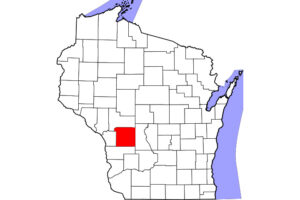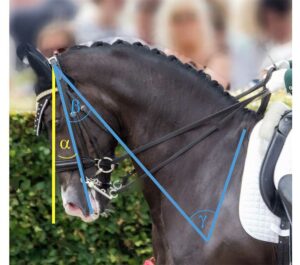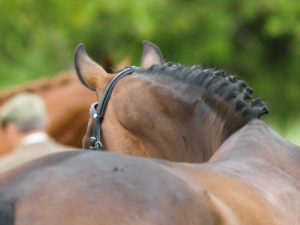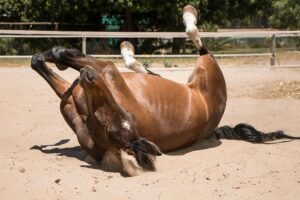The Equine Respiratory System
- Topics: Anatomy & Physiology, Diagnostics and Technology, Diseases and Conditions, Exercise-Related Conditions, Horse Care, Laryngeal Hemiplegia (Roaring), Lower Airway Problems, Other Respiratory Problems, Other Veterinary Technologies, Respiratory Problems, Respiratory System, Sports Medicine, Upper Airway Problems, Vet and Professional
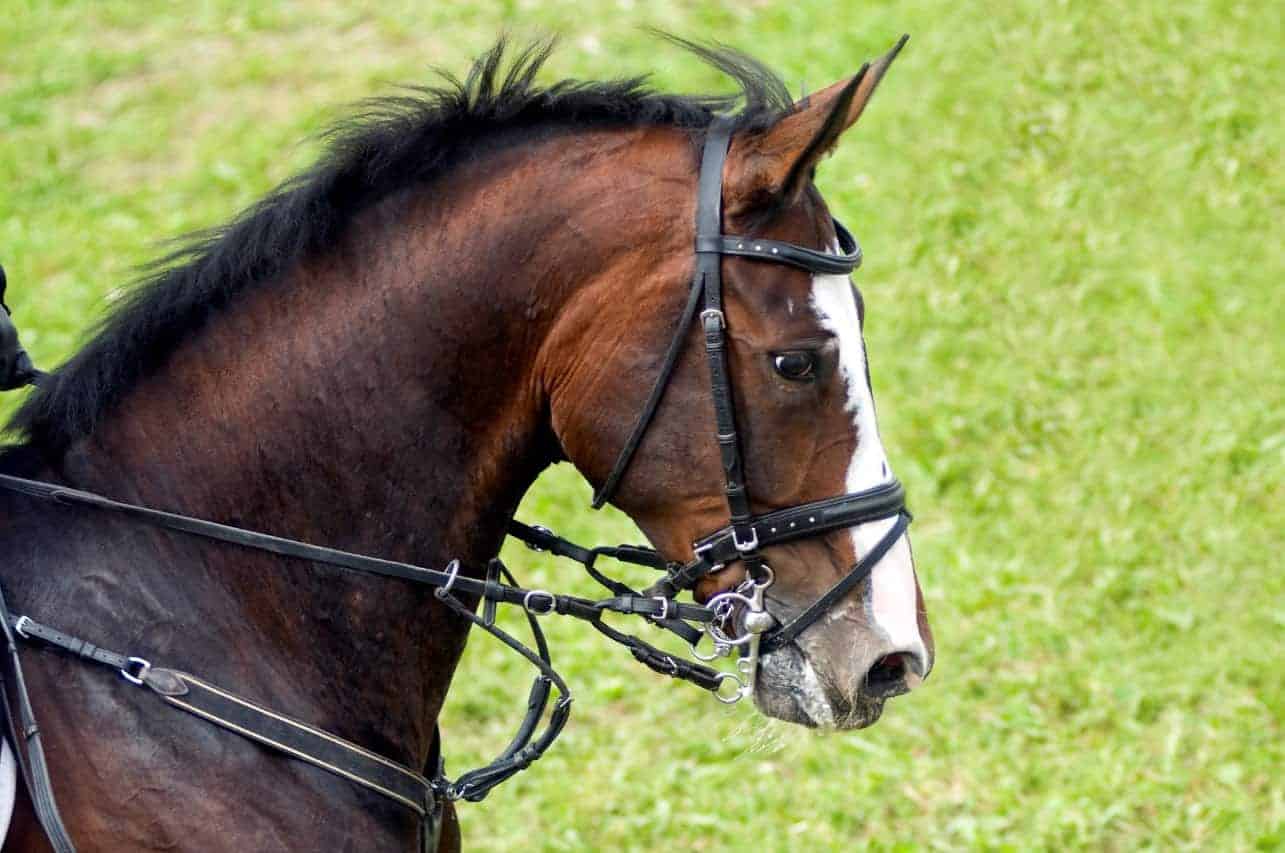
The equine respiratory tract is so highly specialized for exercise that even the slightest deviation from normal can limit a horse’s athletic career.
Erma Bombeck, the late, famous American humorist, once said, “The only reason I would take up jogging is so that I could hear heavy breathing again.”
Well, Erma, you’d love horses! The respiratory tract of the horse, which moves extremely large volumes of air in and out of the lungs, is a highly specialized organ system that serves one primary function: to exchange oxygen for carbon dioxide. Compared to humans (whose respiratory tract is highly specialized for speech) and other mammals, a horse inspires and expires a staggering amount of air.
“At maximal exercise, a horse’s upper airway is subjected to marked fluctuations in flow and pressure during inspiration and expiration,” explains Jon Cheetham, VetMB, PhD, Dipl. ACVS, from the Department of Clinical Sciences at Cornell University’s College of Veterinary Medicine.
According to Cheetham, tracheal pressures ranging from -4905 Pa (pascals, which are a measurement of force per unit area; one pascal is a Newton per square meter) to 2746.8 Pa have been reported, as well as airflow velocities of up to 80 liters per second in horses exercising on a treadmill. To compare, the airflow of an average hair dryer is 40 L/s.
“A horse’s maximal oxygen uptake at maximal exertion is approximately 160 mL/kg/minute, which is about 40 times greater than their oxygen uptake at rest,” says Cheetham. “This is far higher than an elite human athlete’s maximal oxygen uptake, which is only about six to eight times higher at exercising compared to resting values.”
With the exception of the lungs, the remainder of the equine respiratory tract is essentially a glorified tube—the other components of the respiratory system are, in some ways, considered ancillary and serve primarily as a conduit for the air to move between the environment and lungs. That is not to say that the other parts of the respiratory system are unimportant. In fact, respiratory system dysfunction is the second-leading cause of exercise intolerance and poor performance in athletic horses, following musculoskeletal disorders. Structural, functional, and infectious conditions can occur at any point along the respiratory tract.
But wait. Let’s take a deep breath and start at the beginning.
Respiratory System Structure
The respiratory tract commences at the nares (nostrils) and includes the nasal passages separated by the nasal septum, the paired paranasal sinuses and guttural pouches, and the nasopharynx. The nasopharynx is the cavity located dorsal to (above) the soft palate and extends from the nasal passages to the larynx and start of the trachea. The soft palate is the anatomic extension of the hard palate, also referred to as the roof of the mouth. In the horse, the soft palate is very long: it extends from the termination of the hard palate all the way to the base of the epiglottis. The epiglottis, therefore, lies on top of the soft palate, making the horse an obligate nasal breather. That is, air cannot enter the mouth to reach the trachea because the soft palate blocks the airflow. Thus, the horse is the epitome of the proverb, “The nose is for breathing, the mouth is for eating.”
Comparison of Various Flow Rates (reported in liters per second)
| Water over Niagara Falls (Canadian Horseshoe Falls) | 600,000 |
| Airflow velocities in exercising horses | 64-79 |
| Airflow generated by an average hair dryer | 40 |
| Airflow velocities in exercising humans | 4 |
| Molasses in January | Too slow to measure |
The epiglottis is one of several cartilaginous structures that make up the larynx (voice box). The other cartilages that form the larynx are the cricoid, thyroid, and paired arytenoid cartilages. Other important structures of the larynx include the aryepiglottic folds, the vocal cords, and the glottic cleft, which is the entrance to the larynx. The larynx is located at the back of the throat, at the top of the trachea. The larynx can be considered the “middle” of the respiratory tract, as it essentially serves as the dividing mark between the upper and lower respiratory tracts.
The trachea begins at the larynx and travels down the neck and into the thorax (chest). Within the thorax, the trachea divides into two tubes, the chief bronchi, each bronchus leading to one of the two lungs. Within each lung, the chief bronchi further divide and subdivide within the lungs. These tubes become narrower and narrower and are referred to first as bronchi, then bronchioles. Ultimately, the airways lead to the alveoli—microscopic air sacs located at the end of the bronchioles were gas exchange occurs. A classic example of the structure of the lungs is a bunch of grapes. If one were to hold a bunch of grapes by the largest stem, the stem would represent one of the chief bronchi, and it divides and subdivides to ultimate end at a grape, which represents the alveoli.
Respiratory System Function
As described above, the upper and lower airways can be considered a specialized passageway for the air to travel to and from the lungs—the functional unit of the respiratory tract where respiration occurs. Air enters the nares and flows through the nasal passages, where it is warmed and debris is filtered. The air then courses through the nasopharynx, passes over the epiglottis and through the larynx via the glottic cleft, before moving down the trachea, bronchi, and bronchioles to the alveoli.
There, the oxygen in the inspired air diffuses across the extremely thin walls of the alveoli into the bloodstream. There are millions of alveoli in the equine lung, and each is wrapped within a bed of tiny, thin-walled blood vessels called capillaries. The oxygen in the inhaled air delivered to the alveoli is, therefore, in very close proximity to the blood in the capillaries and simply diffuses across the alveolar and capillary walls into the blood, then into the red blood cells. Similarly, carbon dioxide diffuses out of the blood, into the alveoli, and is subsequently expired through the airways.
The driving factor for the diffusion of both oxygen and carbon dioxide is the existence of a concentration gradient. Since the blood that is pumped into the lungs is low in oxygen and a high amount of oxygen is present in the alveoli, the oxygen simply “flows” from an area of high oxygen concentration to an area of low oxygen concentration. The opposite is true for carbon dioxide. There are high concentrations of carbon dioxide in the blood pumped to the lungs (from systemic circulation), but there are only low concentrations in the alveoli. Thus, carbon dioxide flows down its concentration gradient, out of the blood, and into the air sacs of the lungs.
The oxygenated blood in the lungs is then pumped back to the left atrium and ventricle of the heart and is subsequently circulated throughout the body to oxygen-dependent tissues, such as exercising skeletal muscles.
While the process of respiration appears outwardly simple, the integrated function of many nerves, muscles, cartilages, and other anatomic structures is essential to ensure the unobstructed flow of air to and from the alveoli. This is particularly important in horses exercising at high speeds.
When Things Go Wrong
“Considering the complex anatomy of the upper respiratory tract and the high demands placed upon it by tremendous fluctuations in pressure within the upper respiratory tract, it is not surprising that respiratory tract dysfunction is so common,” comments Cheetham.
In fact, as mentioned previously, respiratory-related health conditions are the second-leading cause of poor performance in athletic horses. Something can “go wrong” at virtually any point in the respiratory tract. Some of the more common problems affecting the respiratory tracts of horses include:
- Respiratory tract infections (such as equine herpesvirus and strangles);
- Laryngeal lymphoid hyperplasia (also called pimples);
- Dorsal displacement of the soft palate;
- Nasopharyngeal collapse;
- Laryngeal hemiplegia (roaring);
- Epiglottic entrapment;
- Exercise-induced pulmonary hemorrhage (EIPH);
- Pneumonia;
- Pleuritis; and
- Inflammatory airway disease (IAD).
Of the above-listed disorders, dorsal displacement of the soft palate (DDSP) and laryngeal hemiplegia are thought to be the two most important causes of poor performance associated with the respiratory tract. It is currently estimated that 10-20% of athletic horses suffer intermittent or persistent DDSP, which describes the soft palate displacing upward above the epiglottis during exercise, creating an expiratory obstruction.
“This movement of the soft palate into the airway often results in vibration of the soft palate and an expiratory noise is audible. The decrease in performance associated with DDSP is due to this expiratory airway obstruction, a reduction in minute volume, tidal volume, and oxygen consumption,” says Cheetham. Minute volume is the amount of gas exhaled per minute, while tidal volume is the amount of gas inhaled and exhaled during one respiratory cycle.
“The exact cause of DDSP remains to be fully elucidated,” says Cheetham.
“We know that by experimentally blocking two of the nerves that control the tone of the palate and the position of the larynx we can induce DDSP,” he adds. “In young horses, pharyngeal lymphoid hyperplasia is also an important contributing effect. High airway pressure over the palate and increased local turbulence may also contribute to DDSP.”
Prevalence of Airway Dysfunction
| Condition | Prevalence |
| Dorsal displacement of the soft palate | 10% to 20% of athletic horses |
| Laryngeal hemiplegia (roaring) | 5% to 8% of racing Thoroughbreds |
| Epiglottic entrapment | Approximately 1% to 2% of athletic horses |
| Exercise-induced pulmonary hemorrhage | As many as 87% of racing Standardbreds and 95% of racing Thoroughbreds |
| Inflammatory airway disease | As many as 50% of racing Thoroughbreds and racng Standardbreds |
Left laryngeal hemiplegia is caused by a weakness or paralysis of the left arytenoid cartilage and vocal fold, resulting in the horse’s failure to achieve full abduction of these structures during respiration. Instead, the arytenoid cartilage and vocal fold droop or hang in the lumen (middle) of the larynx. In turn, the diameter of the larynx during exercise is reduced and the volume of air that can pass through the horse’s larynx to the lungs is decreased. Left laryngeal hemiplegia is also called “roaring,” due to the classic sound emanating from the upper respiratory tracts of affected horses. The underlying cause of roaring is a degeneration of or damage to the nerve (the left recurrent laryngeal nerve) that innervates the dorsal cricoarytenoid muscle on the left side of the larynx. A veterinarian diagnoses this condition via endoscopic examination of the larynx, and he or she scores the condition according to a standardized grading scheme (Grade I to IV). For example, Grade I describes horses in which both arytenoid cartilages abduct completely and synchronously during respiration, whereas Grade IV describes horses with a left arytenoid cartilage that does not abduct during respiration, but instead remains hanging at or near the midline of the larynx.
Diagnostic Challenges
Considering the clear difference in anatomic position of the soft palate relative to the epiglottis in normal horses as compared to horses with DDSP, diagnosis should theoretically be straightforward. But, like so many conditions in the horse, it’s not that simple.
The soft palate is a dynamic structure that, in some horses, can relatively readily displace dorsally above the soft palate, but usually it only does so when subjected to high airway pressures (i.e., during exercise). Further, displacement of the soft palate often occurs only intermittently … and usually not when the veterinarian is looking down the end of a scope! For these and other unidentified reasons, diagnosing DDSP continues to be clinically challenging.
Traditional diagnostic techniques include endoscopy either while the horse is at rest or exercising on the treadmill. In response to multiple concerns regarding the inability for endoscopy to accurately diagnose upper airway dysfunction, even on a high-speed treadmill, researchers developed portable endoscopy. While various forms of these portable endoscopes exist, the techniques for using any portable endoscope, also referred to as overground endoscopy, are essentially the same as with a traditional scope.
The fiberoptic portion of the scope is inserted through the horse’s nasal passages to the level of the larynx. The scope has a lightweight light source for visualizing the structures of interest and a flushing system that enables the veterinarian to wash mucus and other debris from the tip of the scope. The scope is fixed to the horse’s bridle to hold it in place while exercising. A small 2-kg to 3-kg box, containing a battery and electronics for recording the images, is affixed to the saddle, jockey’s back, or cart/sulky/harness. The examiner also employs a remote system that can start and stop recording, flush the scope when needed, and allow real-time visualization. This technology is available in North America, and researchers are publishing studies supporting the ability to accurately diagnose airway dysfunction in horses exercising in their normal environments.
Take-Home Message
“The equine upper airway is highly complex and adapted for exercise. Airflows in the horse’s airways are very high, which means that even a small abnormality can lead to a large decrease in performance,” concludes Cheetham.
Establishing an accurate diagnosis using an endoscope with either a treadmill or an overground system is crucial to determining the most appropriate management for horses with airway dysfunction.
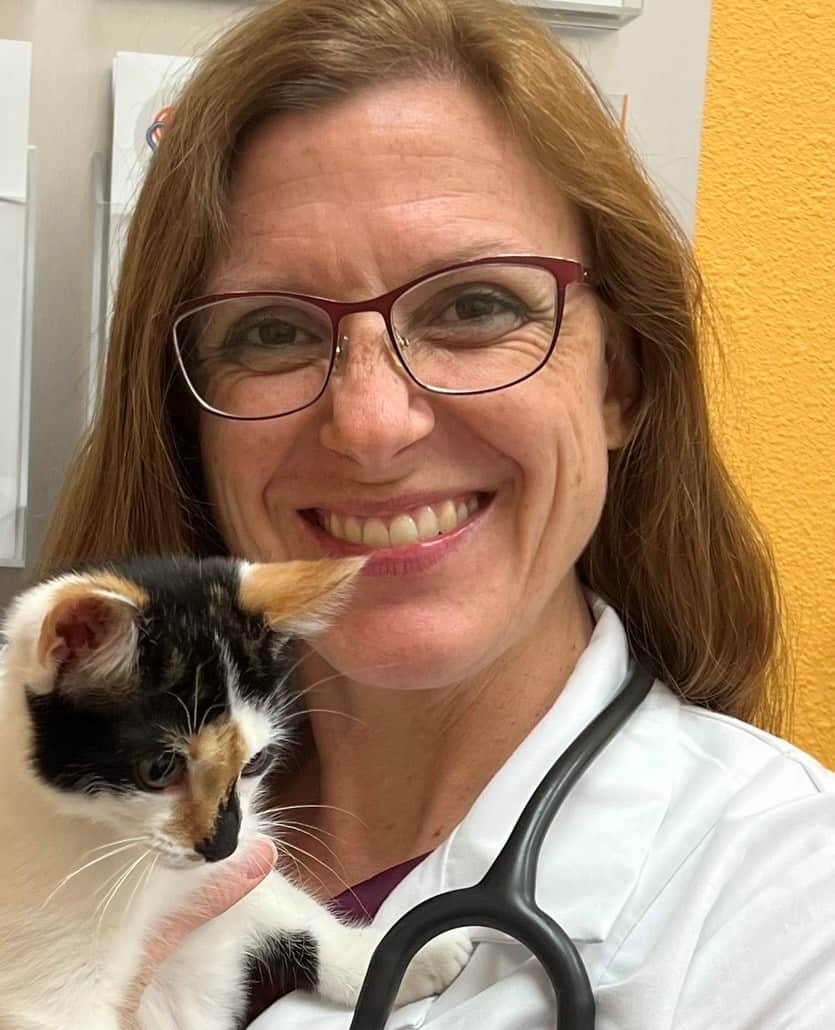
Written by:
Stacey Oke, DVM, MSc
Related Articles
Stay on top of the most recent Horse Health news with










